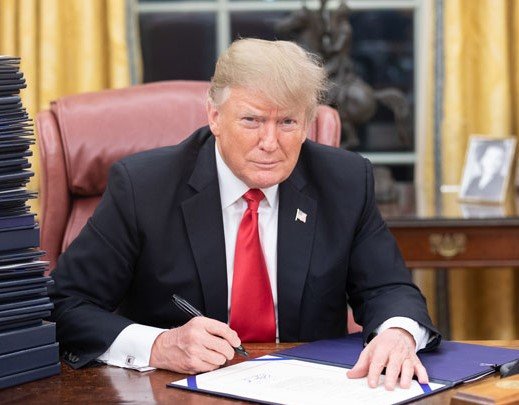As fresh tariffs rattle global markets, Trump claims India deal is on the horizon while doubling down on America-first rhetoric
The United States is “very close” to clinching a trade agreement with India, President Donald Trump told reporters late Monday in Washington, even as he unveiled a new round of tariffs targeting 14 countries across Asia and beyond.
The announcement, made during a bilateral dinner with Israeli Prime Minister Benjamin Netanyahu at the White House, sent a ripple through global trade circles. And while Trump’s message was peppered with bravado and patriotic flourish, the implications are already being dissected from New Delhi to Tokyo.
India Deal Looms As Trade Winds Shift
President Trump didn’t offer specifics, but his remarks on India were clear enough to ignite speculation. “We’re close to making a deal with India,” he said, without elaborating on timelines or terms. This comes amid stalled negotiations under previous rounds of trade talks, where agriculture, data localization, and e-commerce had been sticking points.
Indian officials have kept their cards close to the chest. Commerce Minister Piyush Goyal, when asked about Trump’s statement, avoided giving a confirmation but said, “We negotiate from a position of strength, not under deadlines.”

That sounds like a nod to India’s growing clout in the global trade ecosystem. New Delhi’s export numbers have been strong in pharmaceuticals, electronics, and software services. And with elections behind it, the Modi government has room to maneuver on trade.
India wants better access for its textiles and generic drugs, while the U.S. is eyeing digital goods, agricultural exports, and stronger IP enforcement. Whether both sides can meet in the middle remains uncertain.
Tariffs Galore: 14 Nations on the New List
The backdrop to Trump’s India comment was hardly subtle — the President had just slapped new tariffs on 14 nations, including Japan, South Korea, Bangladesh, Myanmar, Thailand, and even smaller players like Cambodia.
This is how he put it: “We’ve spoken to everybody… it’s all done. We’re going to send letters. We’re going to say, welcome to the United States if you’d like to participate in the greatest, most successful country ever.”
Some of the countries hit with tariffs were already in tense standoffs with Washington. Others were blindsided. The new duties, set to take effect August 1, reportedly cover products across multiple sectors.
Here’s what we know so far:
-
Tariffs apply to a range of industrial and agricultural products.
-
South Korea and Japan, long-standing allies, were included in the list.
-
Trump said these moves were “exactly what I said I’d do,” calling it proof of his “deal-making strength.”
What This Means for India’s Trade Priorities
India finds itself in an unusual position: praised by Trump while everyone else is getting the tariff stick. That doesn’t mean Delhi’s path is smooth.
Indian officials are wary of overcommitting. They remember the fallout from the Regional Comprehensive Economic Partnership (RCEP), which India exited in 2019. Plus, with China now reportedly on board with a new U.S. deal, there’s fresh pressure to define India’s position in a world being reshaped by trade blocs.
At the same time, India has already ramped up talks with the European Union, the UK, and Australia. A U.S. pact would be a strategic win, not just an economic one. It could unlock more access for India’s services sector and offer new footholds for startups and tech firms.
But there’s always a catch. And with Trump, the fine print has a way of changing mid-sentence.
Inside the White House Dinner and Trump’s Strategy
The optics of Monday night’s White House dinner were calculated. Prime Minister Netanyahu at the table, headlines dominated by conflict in the Middle East, and yet Trump carved out a moment to talk tariffs and trade.
His messaging was classic Trump — equal parts boosterism and bombast. “We’ve never had numbers like this. Never had investment like this,” he said, in reference to the U.S. economy.
But the subtext was clear. The U.S. is drawing up a new map of global trade. And Trump wants everyone to know who’s calling the shots.
There was no readout on whether India was formally discussed during the dinner, but sources said National Security Advisor Jake Sullivan and USTR officials have been in regular contact with India’s trade team over the last three weeks.
Where India-U.S. Trade Talks Stand Now
If you peel back the noise, there’s cautious movement behind the scenes. Indian diplomats have been engaging Washington with a renewed focus since mid-June.
A senior official told Bloomberg under anonymity, “The big barriers remain digital taxation rules, market access for American dairy, and IP rules around biologics. But both sides want this done before the U.S. heads into full election mode.”
A look at India’s trade figures shows why Washington is so keen:
| Year | India’s Exports to U.S. | U.S. Exports to India |
|---|---|---|
| 2022 | $76.2 billion | $47.2 billion |
| 2023 | $82.4 billion | $52.9 billion |
| 2024 | $91.7 billion | $60.3 billion |
India is now America’s 9th largest trading partner. And if this deal lands, it could push it even higher.
Allies Nervous, China Watching
Trump’s remarks may have calmed India for now, but his hammer on Asia sent tremors elsewhere.
South Korea, caught off guard by the tariffs, issued a sharp statement calling the move “unilateral and deeply unhelpful.” Japan’s finance ministry said it would “review legal options under WTO mechanisms.” And Thailand’s trade minister said Bangkok was “not informed in advance and considers this a hostile act.”
China, meanwhile, stayed unusually quiet. With Xi Jinping skipping the BRICS summit and Premier Li Qiang keeping a low profile, Beijing is walking a careful line. Trump claims to have made a deal with China — but there’s no clarity on what that means yet.
Still, Beijing will be watching New Delhi closely now. If India cuts a deal and scores market access without deep concessions, it changes the calculus in Asia.
